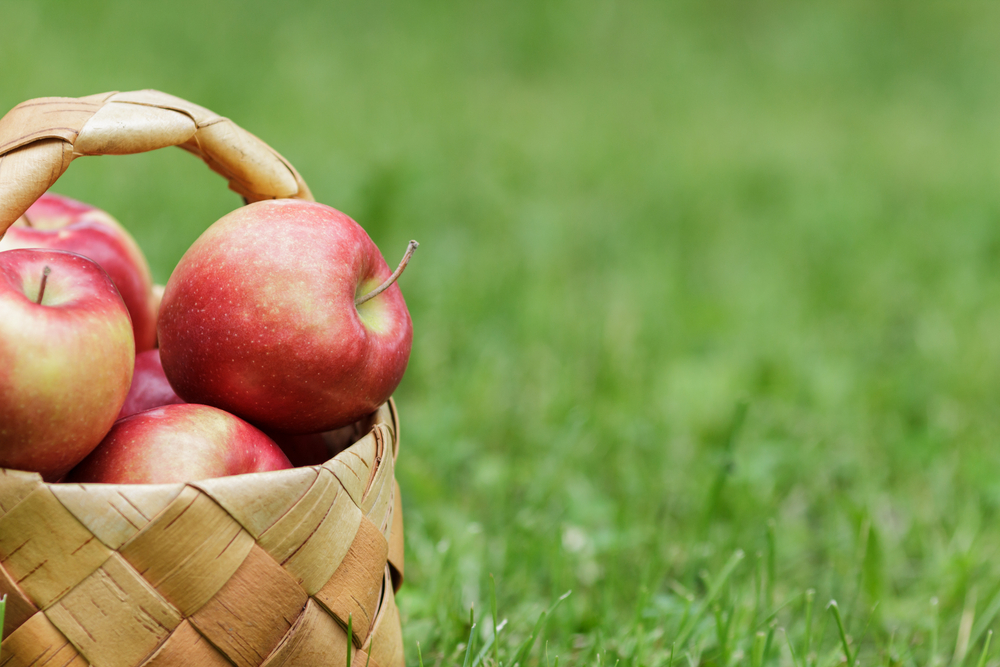
September gardening.
There are a lot of enjoyable “to-dos” this month. September is a great month for planting and harvesting. Enjoy working outdoors in the comfortable temperatures in the weeks leading up to the first frost.
What to Harvest
This month you may begin to harvest crops you planted in August including radishes, lettuce, spinach, kale, swiss chard, baby beets, carrots and arugula. If you’ve been growing apples and pears, you may be harvesting them this month. When crops are removed, plant cover crops like oats or annual rye.
What to Plant
Vegetables
Plant garlic in September. You will harvest it next August. In the beginning of the month there’s still time to plant seeds of spinach, radishes, chard, beets, carrots, turnips, kale, kohlrabi, mustard greens, leaf lettuce and head lettuce. Cauliflower and broccoli can be planted as seedlings. By the end of the month, you’ll only have time to plant spinach, lettuce, radishes, kale and other greens like arugula.
Bulbs and Fall Bloomers
If you haven’t already ordered your spring flowering bulbs, do so as soon as possible for best selection. Plant your bulbs in late September. Maximize the planting by layering–plant daffodils at the deepest level, then grape hyacinths and then plant mums or kale on top. This is also a good time to plant bulbs in pots for forcing for the winter. (Forcing is causing the blooms to grow indoors. You force them to bloom sooner than they would outdoors. Can be done with paper whites amaryllis hyacinths and other bulbs.) Most bulbs come from dry areas, so be sure to plant them in areas where they will have good drainage.
This is the perfect time to refresh your containers and annual beds with hardy mums, kale, cabbages, asters and pansies. We rarely get a frost before October 1st. Now is the time to refer to your notes about areas for improvement in your garden beds.
Perennials/Shrubs/Trees/Ground covers
Fall is an excellent time to reinvigorate your perennial beds. New plants can be added, including landscape roses, ground covers, vines and ornamental grasses. Peonies can be divided in the fall, as can daylilies, heuchera, coneflowers and most other perennials. Most of these plants can take a little frost if they’re in the ground or in containers protected by the house.
General Garden Care
Weeding/Watering
Keep weeding and be sure to remove old plant material as you work to avoid any diseases being carried over in the soil. Do pay attention to watering until the ground freezes (which may be well into December). Plants that enter the winter well-watered have a better chance of surviving the winter well. Carefully water new plantings through the month if you are not getting enough rain.
Thinning/Dividing/Mulching
Plan to thin out some groundcovers like vinca minor and pachysandra in areas where they’ve become overcrowded and move them to areas where you want to weed less and have layers of plant materials. Mulch, but be careful not to cover the crowns of existing plants. Protect your hybrid tea roses for the winter. Don’t cover them for the winter (with mulch) until the ground freezes. Deciduous shrubs and trees can be planted in the fall. Do not fertilize plants at this time of year since they will not be actively growing in fall and winter.
Vegetables
Clean up your vegetable garden as crops are finished. As tomatoes, peppers, eggplants and corn are finished, remove the plant material to the compost pile. If you have had any diseases on tomatoes or other plants, be sure to bury those plants deep within the compost pile.
Any houseplants that you have been keeping outside should be moved back indoors over a period of several days. Move them from outdoors to an unheated covered area and then into the house. Most plants will experience a shock when moved and lose leaves. Keep watering, but not too much! Do not fertilize houseplants at this time of year as they will not be growing as much during this time of year.
Houseplants
Before you bring the plants indoors, make sure they are free of pests. Inspect and remove slugs, earwigs and other insects you see. Use mild insecticidal soap if you find aphids, scales, mites or whiteflies. As they come in, you may want/need to prune them to make a more attractive shape, remove yellow leaves or broken stems.
Lawn
September is also a great month to restore and reinvigorate your lawn. We have cool season grasses that grow best in spring and fall. Take advantage of this time to seed and sod your lawn and for reinvigorating practices like core aeration.
Happy September gardening! Best of all, enjoy the beautiful weather, home-grown food, loads of flowers and the anticipation of fall foliage!
Bonus:
Listen to the latest Green Divas in the Garden podcast…
[dynamic-sidebar id=’Custom Widget 2′]